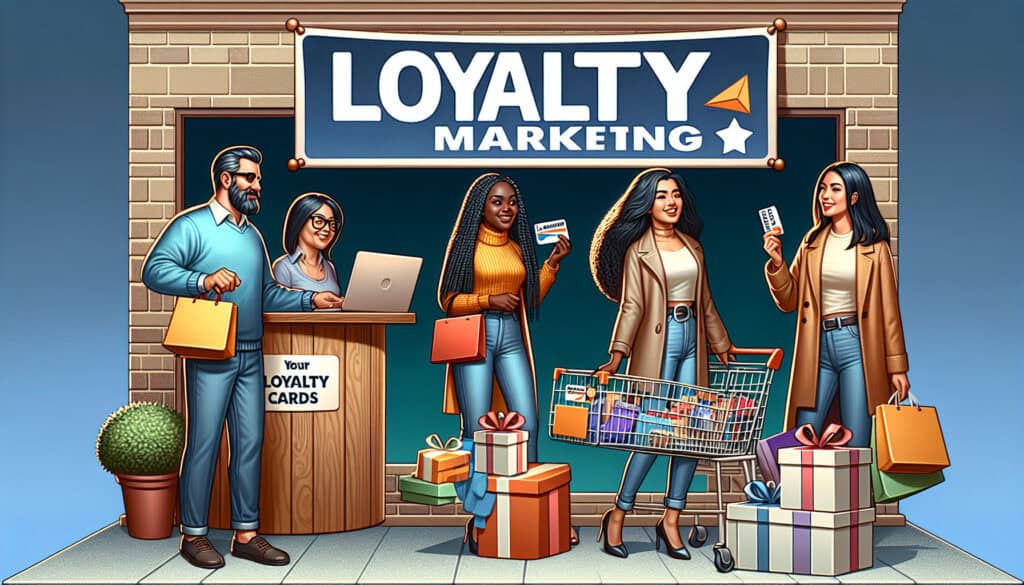Bestehende Kunden zu halten und ihren Lebenszeitwert zu erhöhen.
- Methodologien: Lean Sigma, Herstellung
Loyalitätsmarketing

Loyalitätsmarketing
- Markenpositionierung, Markenstrategien, Kundenerfahrung, Customer Journey Mapping, Marketing, Marketingstrategie, Produktmanagement, Produktpositionierung, Wert-Angebot
Zielsetzung:
Wie es verwendet wird:
- A marketing strategy that focuses on rewarding existing customers for their loyalty. This can be done through loyalty programs, exclusive offers, and personalized experiences.
Vorteile
- Increases customer retention and lifetime value; Can be more cost-effective than acquiring new customers.
Nachteile
- Can be expensive to implement and maintain; The market is saturated with loyalty programs.
Kategorien:
- Kunden & Marketing
Am besten geeignet für:
- Building a loyal customer base and increasing customer lifetime value for a retail or service business.
Loyalty Marketing can significantly influence sectors such as retail, hospitality, and e-commerce, where establishing strong relationships with consumers often leads to repeat transactions. Companies like Starbucks and Sephora implement loyalty programs that reward customers with points for purchases, which can be redeemed for discounts or exclusive merchandise, effectively motivating frequent visits while enhancing the customer experience through personalized offers. In the context of project phases, this methodology can be integrated during the design and launch of new products or services by incorporating feedback from loyal customers who may serve as beta testers or brand advocates. Stakeholders such as marketing teams, sales departments, and customer service representatives should initiate loyalty programs to ensure they are tailored to meet customer expectations and preferences. Engaging customers through branded experiences, such as members-only Veranstaltungen or early access to new product lines, can further deepen loyalty, making participants feel valued and connected to the brand’s narrative. These strategies, rooted in data analytics, allow businesses to refine their offerings based on consumer purchasing behaviors and trends, optimizing resource allocation and supporting sustainable growth.
Die wichtigsten Schritte dieser Methodik
- Segment existing customer base to identify loyalty tier levels based on purchasing behavior.
- Design loyalty programs with clear rewards structure aligned with customer preferences.
- Implement technology solutions for personalized customer engagement through data analytics.
- Launch exclusive promotions and offers for loyalty members to increase participation.
- Regularly communicate program updates and benefits to maintain customer interest.
- Monitor program performance metrics to assess effectiveness and make adjustments.
- Solicit feedback from members to refine program elements based on their experiences.
- Create partnerships with third-party vendors to enhance reward offerings.
- Integrate loyalty initiatives with broader marketing campaigns for cohesive messaging.
Profi-Tipps
- Leverage data analytics to segment your customer base and tailor loyalty rewards based on shopping behavior, ensuring relevance and higher engagement.
- Create tiered loyalty programs that incentivize higher levels of spending, rewarding customers not just for purchases but for referrals and social sharing.
- Incorporate experiential rewards into your loyalty program, such as exclusive access to events or personalized experiences, enhancing emotional connections with the brand.
Verschiedene Methoden lesen und vergleichen, Wir empfehlen die
> Umfassendes Methoden-Repository <
zusammen mit den über 400 anderen Methoden.
Ihre Kommentare zu dieser Methodik oder zusätzliche Informationen sind willkommen auf der Kommentarbereich unten ↓ , sowie alle ingenieursbezogenen Ideen oder Links.
Historischer Kontext
1960
1980
1983
1990
1995
2000
2010
1950
1980
1980
1986
1994
1995
2000
(wenn das Datum nicht bekannt oder nicht relevant ist, z. B. "Strömungsmechanik", wird eine gerundete Schätzung des bemerkenswerten Erscheinens angegeben)














Verwandte Artikel
METS-Kalorien-Rechner
Meta-Analyse
Nachrichten-Mapping
Mentalmodell-Diagramme
Maximal zulässige Druck- und Zugkräfte
Materialbedarfsplanung (MRP)